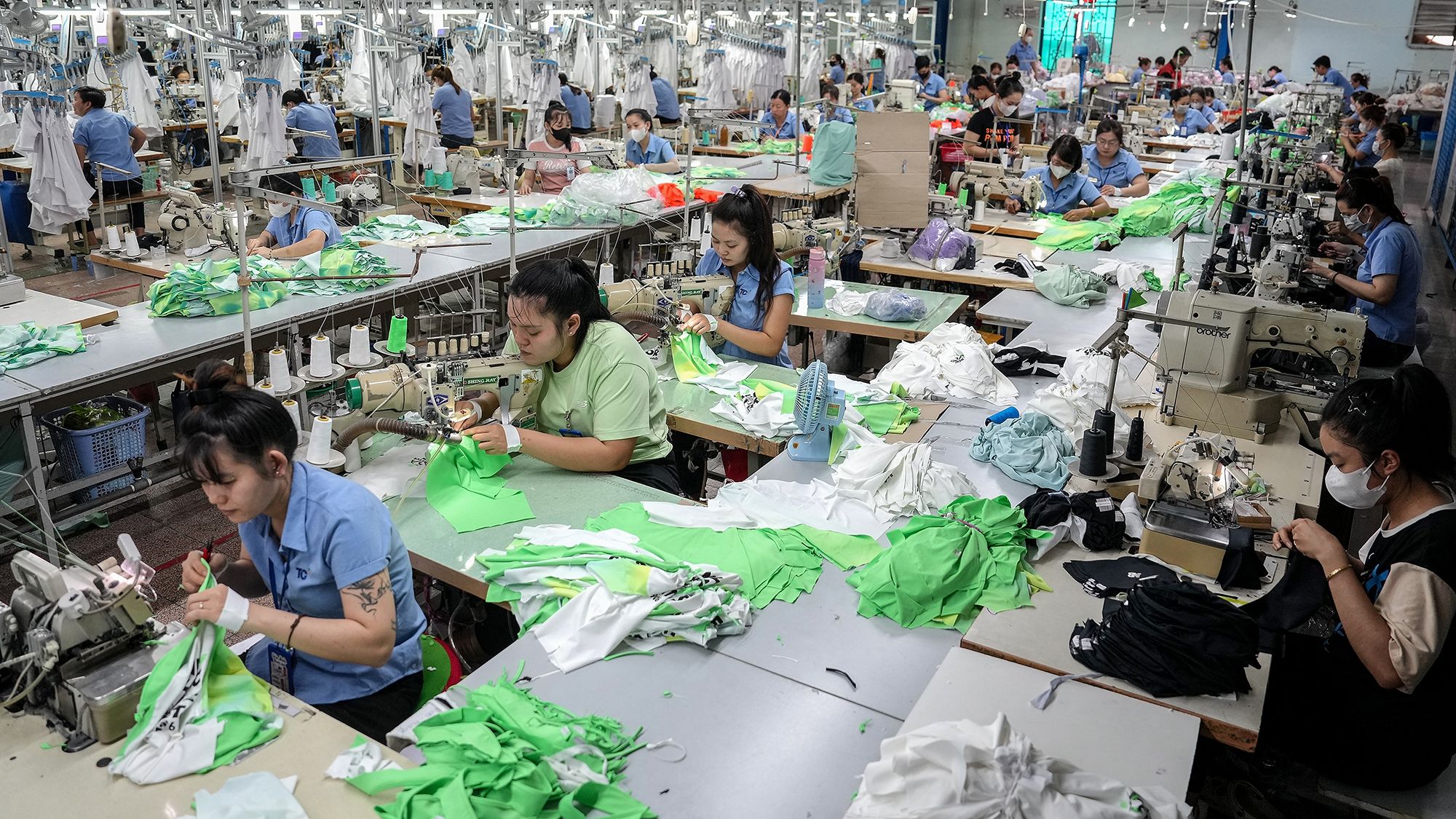Against a ticking clock, President Donald Trump said Wednesday the United States has reached a trade agreement with Vietnam, pulling off the administration’s third significant deal ahead of a self-imposed July 9 deadline.
Still, the state of global trade largely remains in flux.
“I just made a Trade Deal with Vietnam,” Trump wrote in a Truth Social post.
In a subsequent post announcing more details, Trump said the United States will charge a 20% tariff for Vietnamese exports into America, and a 40% tariff for “transshipping.” US Commerce Secretary Howard Lutnick said in a post on X Wednesday afternoon the “transshipping” tariff means “if another country sells their content through products exported by Vietnam to us — they’ll get hit with a 40% tariff.”
The 20% tariff is double the current minimum tariff rate the US is charging on goods from Vietnam and virtually every other country.
“In return, Vietnam will do something that they have never done before, give the United States of America TOTAL ACCESS to their Markets for Trade,” he added. “In other words, they will ‘OPEN THEIR MARKET TO THE UNITED STATES,’ meaning that, we will be able to sell our product into Vietnam at ZERO Tariff.”
It wasn’t immediately clear if the deal was finalized or whether Vietnam had agreed to what Trump announced. Vietnam’s state-run news outlet, Việt Nam News, reported that General Secretary Tô Lâm and Trump spoke on the phone Wednesday to patch up the terms of the deal, which it referred to as a framework. Vietnam’s US embassy did not respond to CNN’s request for comment.
On the call, “Lâm proposed that the US soon recognize Việt Nam as a market economy and lift export restrictions on certain high-tech products,” the outlet reported.
For months, Trump and his administration have been saying countries were lining up to make trade deals with the United States. But, ahead of July 9, when the 90-day pause on “reciprocal” tariffs ends and levies as high as 50% could go into effect, it’s been mostly crickets. Restoring those historic tariffs risks rocking financial markets and businesses’ plans alike.
Tariff rates on Vietnamese goods shipped to the US were set to rise to a minimum of 46% if the rates Trump announced in April held. Tariffs on Vietnam were among the highest he announced.
The White House has yet to publish any material laying out the details of the deal Trump announced hours Wednesday morning.
“We’re still putting together the press release,” US Deputy Treasury Secretary Michael Faulkender told CNBC Wednesday afternoon. He said that would “probably” come out by the end of the trading day Wednesday, which generally refers to 4 p.m. ET. Faulkender didn’t answer whether the 20% tariff would come on top of the already-in-effect 10% tariff on goods from Vietnam or whether 20% would be the new level.
Imports from Vietnam skyrocketed as tariffs on China grew
Vietnam was the sixth-top source of goods the US imported last year, shipping $137 billion worth of goods. That’s more than double the value of goods exported to the US five years prior, according to US Commerce Department data.
Meanwhile, the trade deficit with Vietnam, equal to the value of goods the US exports there minus imports, has risen in tandem. Last year, it was $123 billion, the third-largest trade deficit the US had with any country. Back in 2019 it was $56 billion, the fifth-largest trade deficit with another country.
Trump has taken particular issue with countries that run large and persistent trade deficits with the US, claiming they’re indicative of unfair trade practices. That helps explain why he sought to impose one of the highest “reciprocal” tariff rates on the country.
Vietnam has benefited from the higher tariffs Trump imposed on Chinese goods during his first term that former President Joe Biden largely kept in place. Those tariffs caused more companies to move their production to Vietnam, where tariff rates were lower.
Among the top imports from there are computers and electronics, apparel and accessories and furniture. While China remains the top imported sources of these goods, Vietnam has quickly been catching up.
Shares of companies that have become reliant on Vietnam, including Nike (NKE), Lululemon (LULU) and Columbia Sportswear (COLM), all jumped higher immediately after Trump announced the deal. Nike and Columbia Sportswear held on to their gains, and were up 4.2% and 1.3%, respectively, around 3 p.m. ET. Shares of Lululemon flipped between positive and negative territory Wednesday, but were up 0.7%. VF Corporation (VFC), which owns The North Face and Vans, was up 1.5%.
The S&P 500 was up 0.38% by mid-afternoon, hitting a new intraday record, and the tech-heavy Nasdaq Composite gained 0.82%. The blue-chip Dow was down 0.1% but pared earlier losses after Trump’s post.
This is a developing story and will be updated.




